Historically, Borzoi were bred to hunt wolves in 1600s Russia. How were they bred to accomplish this, and how different are Borzoi from their ancient ancestors? Let’s learn about Borzoi vs Wolf history.
Borzoi were originally bred as a cross between the Arabian greyhound and an unknown, long-haired Russian breed. They were brought on wolf hunts to chase and capture wolves for hunters, who would then either kill them or take them alive for future Borzoi training.
Borzoi are similar in size to wolves, but these two canines look much different. Wolves have a sturdier build, while Borzois have the slim frames of a sprinter.
Table of contents
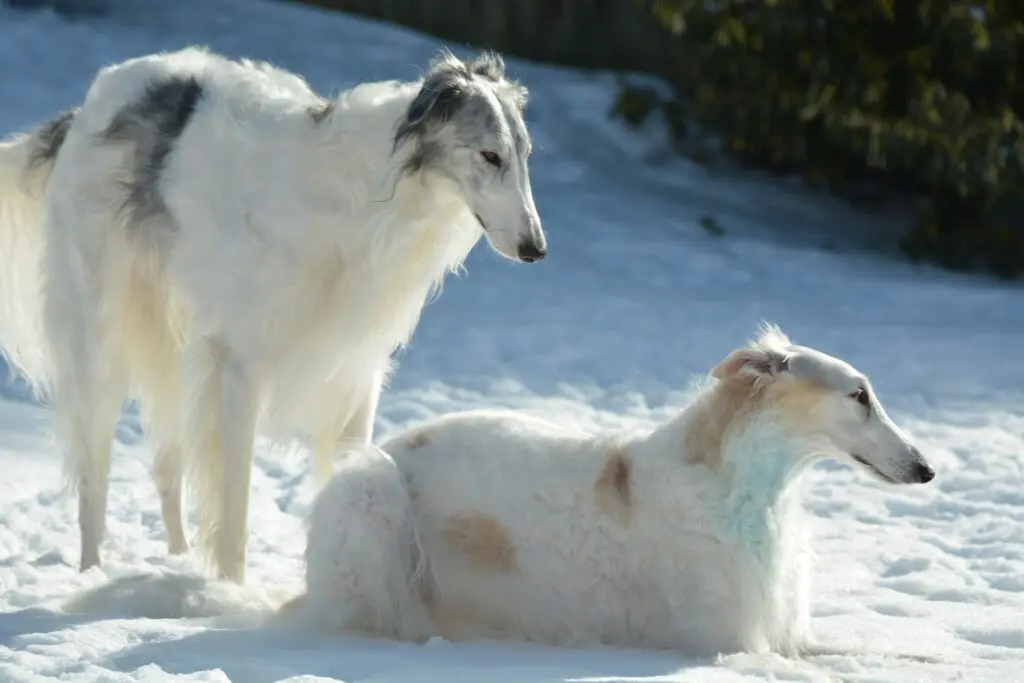
In this article, we’ll discuss the similarities and differences between wolves and Borzois, as well as how the dogs have been used historically to hunt wolves during the days of the Russian aristocracy.
Borzoi vs Wolf
All dogs evolved from wolves, but as we know they can be quite different. How does one compare a wolf and a Chihuahua, for instance?
For one, Borzoi are much tamer and more trainable than their wolf ancestors! They’re also typically a bit smaller and require less exercise throughout the day.
Borzoi live 14-17 years on average. Wolves in nature typically live 6-8 years, but captive wolves often live much longer—up to 17 years old.
When it comes to their similarities, these canines are close in size, can each sprint up to 40 miles per hour, and have thick double coats that protect them from the elements.
Borzoi vs Wolf History
The Borzoi breed dates back to 1600s Russia, where aristocrats used the dogs for hunting. While these first Borzois hunted a variety of game, one of the biggest events they participated in were the grand Russian wolf hunts.
Borzoi Hunting Wolves
These hunts were made into entire competitive events by Russian aristocracy at the time. Some royals owned hundreds or thousands of Borzoi for hunting purposes.
Hunters would wait until a wolf went running, then release the Borzois to chase it. Multiple Borzois would take down a wolf and hold it in place until the hunter arrived on horseback to kill it.
Sometimes, wolves were captured instead and used to train young Borzoi back at the kennels.
In theory, short-haired sighthounds would’ve worked fine for this job. Due to Russia’s cold winters, however, the Russians needed a new breed for their famed hunts.
They bred Arabian greyhounds with a thick-furred Russian breed with the goal of producing fast hunting dogs who could better tolerate the cold winter season.
Long coats also hide scars and injuries better than the thin hair of a greyhound, and some hunters even today prefer them for aesthetic reasons. Borzoi hunting wolves is a part of Russian history and the Borzoi dog breed heritage. Borzoi are the wolf-hunting dogs of Russia.
See also: Borzoi versus Coyote
Borzoi vs Wolf Appearance
Wolves are stockier than Borzois, with their deep chests and thin waistlines. Borzois are built to sprint with their long, slender frames.
Both of these canines have thick double-coats to insulate them from the cold. Double coats also work to protect skin from the sun’s rays, regulate body temperature, and to keep the fur dry and clean.
Wolf fur comes in a variety of colors, but is typically a variation or combination of white, brown, and black.
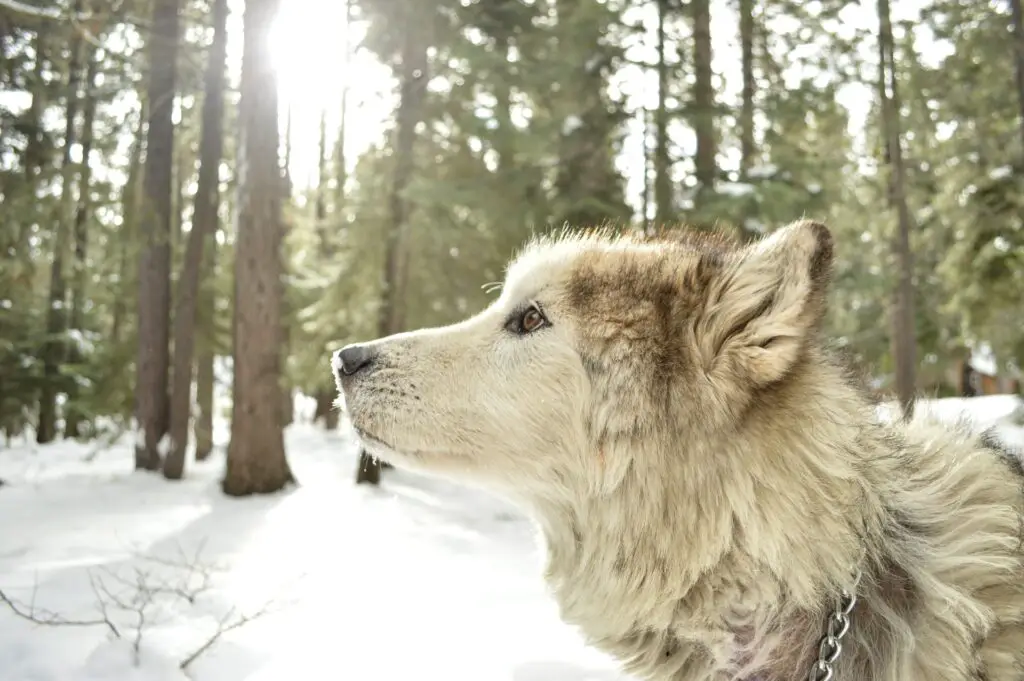
According to breed standards, Borzoi can be any color or combination of colors.
Borzois and wolves are very similar in size. If a wolf and a Borzoi are the same height, however, the Borzoi may weigh less due to their thin waistlines.
Wolves are 26-32 inches tall and weigh anywhere from 50-110 pounds. In comparison, Borzoi stand at 26-32 inches and weigh 60-105 pounds.
Borzoi vs Wolf Temperament
As hunting dogs, Borzois were bred to be independent. Though they can be clingy and like to spend time with their families, they also have ideas of their own. This can make training difficult, particularly when it comes to recall.
Of course, this is nothing when it comes to trying to train a wild animal such as a wolf.
The strong hunting instincts of the Borzoi do lead to some similarities, though, such as the need for properly enclosed yards with tall fences and their tendencies to roam.
Borzois are people-friendly and do well with children and smaller pets so long as they’re socialized properly while young. Of course, we can’t recommend allowing your children or a tiny dog to walk up to your average wolf!
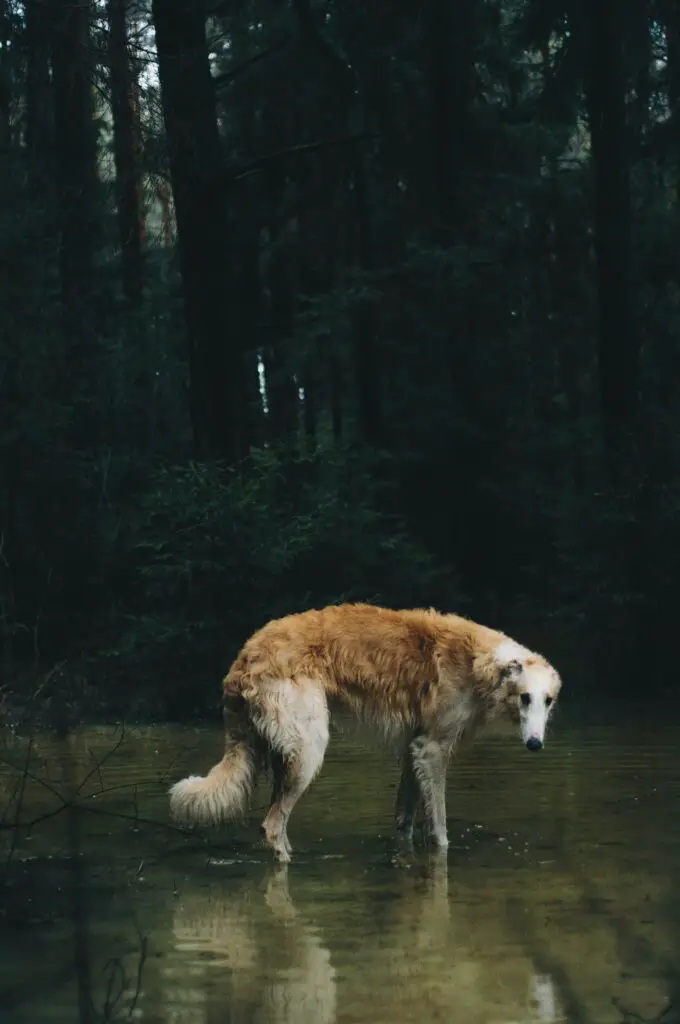
A Borzoi will also tend to be lazier than a wolf has the privilege of being. They love to lounge in comfy areas, such as on your couch or bed, and it doesn’t take a lot of exercise to tire them in comparison to wolves or even some other dog breeds.
Wolf temperament and social interaction is misunderstood by the general public, and this has historically hurt dogs of all kinds—including the Borzoi.
Dominance theory is a harsh and sometimes abusive dog training technique that originated with the observance of captive wolves. It’s where we get a lot of our ideas about both wolves and dogs as a society, although we’re thankfully moving away from these outdated beliefs.
Dominance theory claims that you must be the alpha, or the leader of the pack, in order to receive respect from your dog. However, this isn’t the way dogs think nor the way they interact socially—and neither do wild wolves!
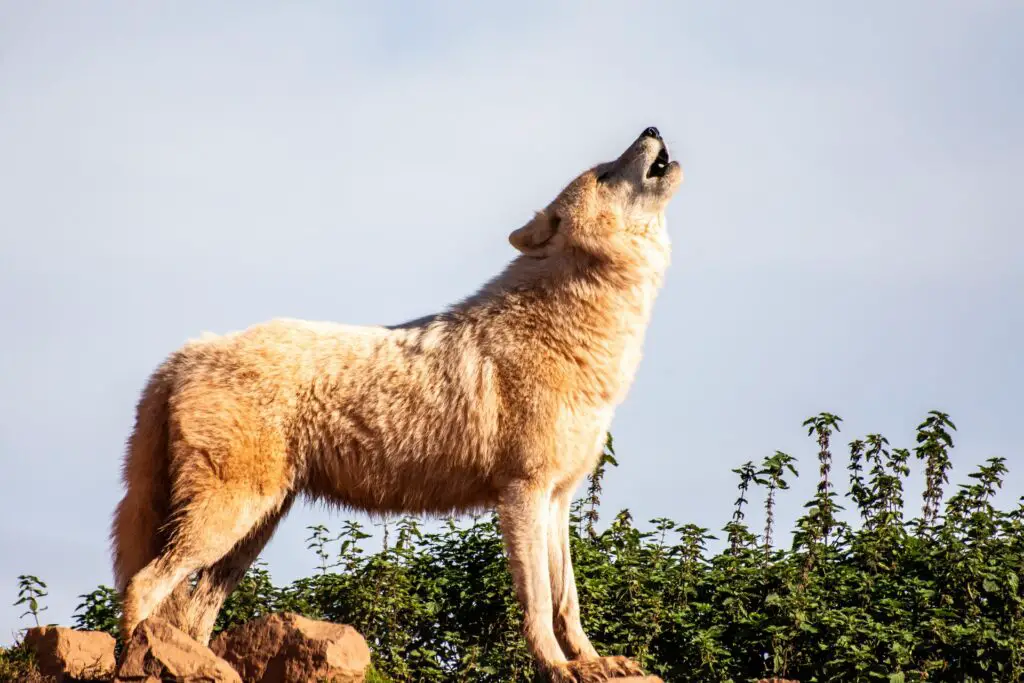
Instead, wolves tend to live in family units. The parent dogs may run the show, but it’s not due to being aggressive “alpha” figures.
As wolves grow, they separate into new family units of their own.
Of course, it’s also important when dealing with our pets to remember that dogs are not wolves, and we must treat them like the separate animals they are.
Borzoi vs Wolf Exercise
Borzois are fast, energetic dogs who need plenty of exercise. They require at least one long walk or run daily, and should be given properly enclosed yards so that they can sprint when they’re feeling hyper.
However, these dogs are also happy to lounge around the house the majority of the day. They aren’t one of those breeds that are always on the go.
Wolves are a different story. They roam around their territories in search of prey, and sometimes travel as much as 30 miles a day. That’s way more exercise than most Borzois need or even want!
Wolves can also sprint at up to 40 miles per hour—but they meet their match with Borzois, as the breed can run just as fast!
Borzoi vs Wolf Hunting
Both canines are made to hunt, but they each complete the task quite differently.
Wolves will stalk their territories looking for prey. Though they can sprint, they travel relatively slowly while searching for their next meal. This is what gives them the endurance to walk tens of miles a day.
They rely primarily on their sense of smell and typically prefer relatively large, hooved prey animals such as deer.
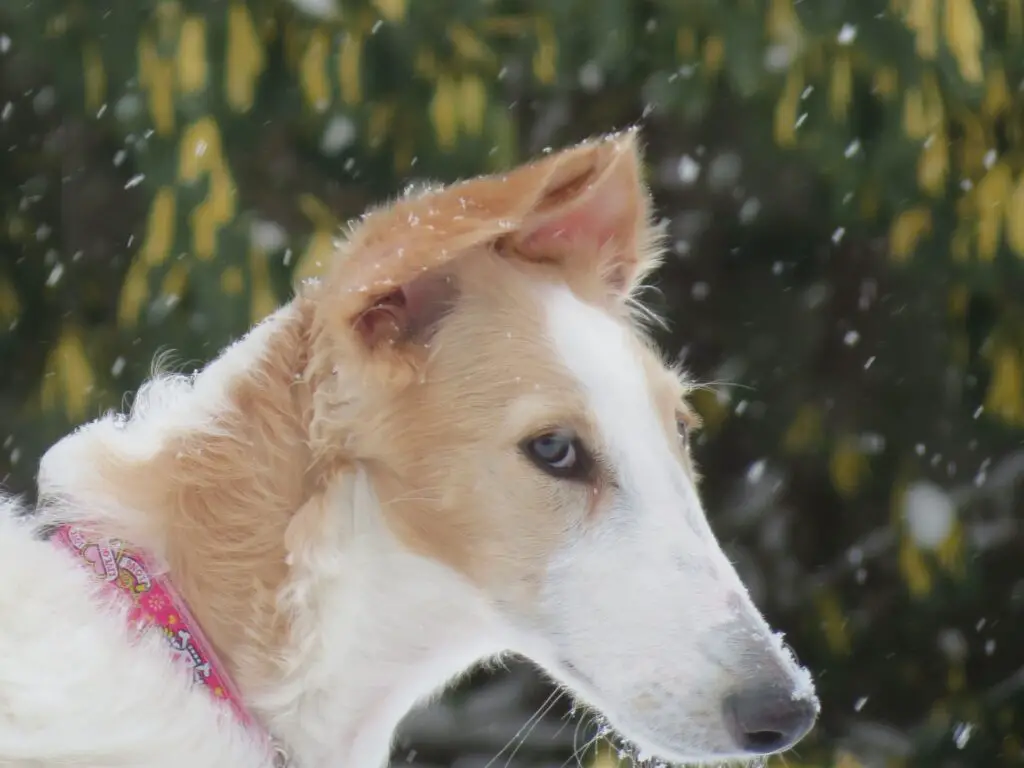
Borzoi weren’t bred to slowly stalk prey, but to sprint after it at full speed. Typically they begin the chase when the other animal is already running, and they must be fast to catch up.
They don’t rely as heavily as wolves or other hunting dogs on their sense of smell. Instead, Borzoi hunt by sight.

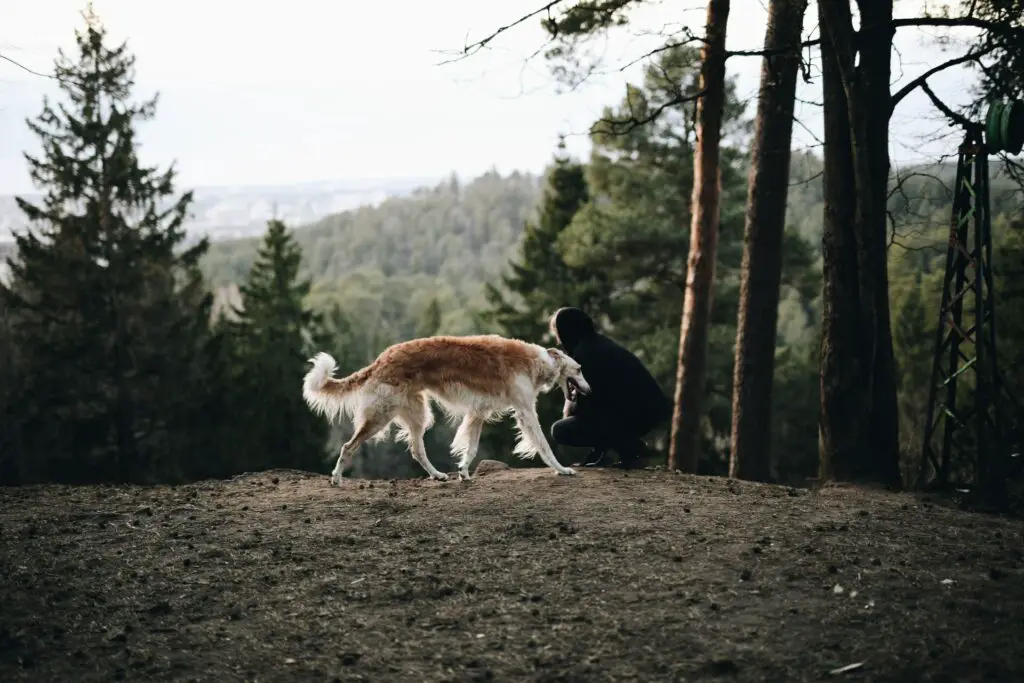
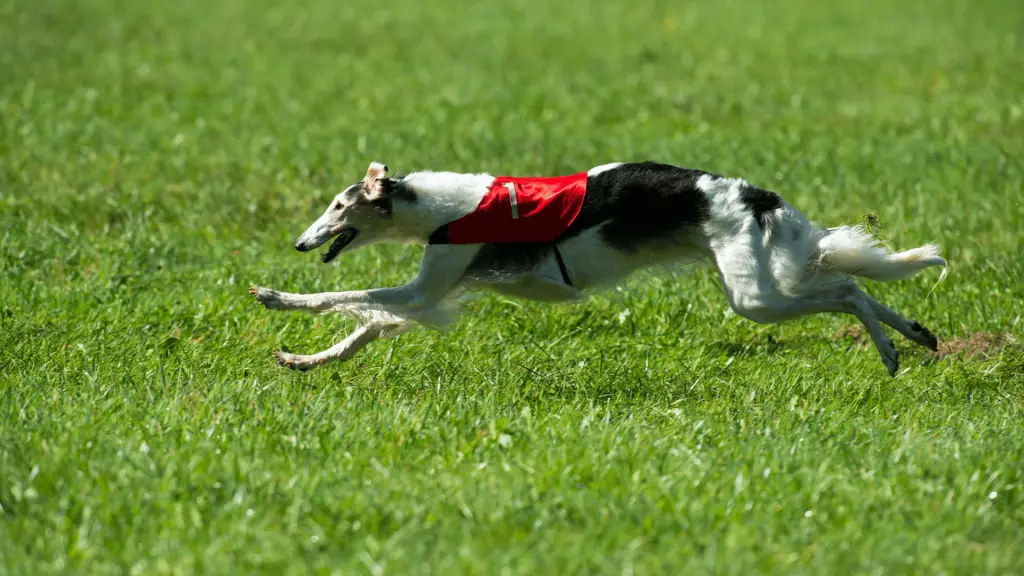
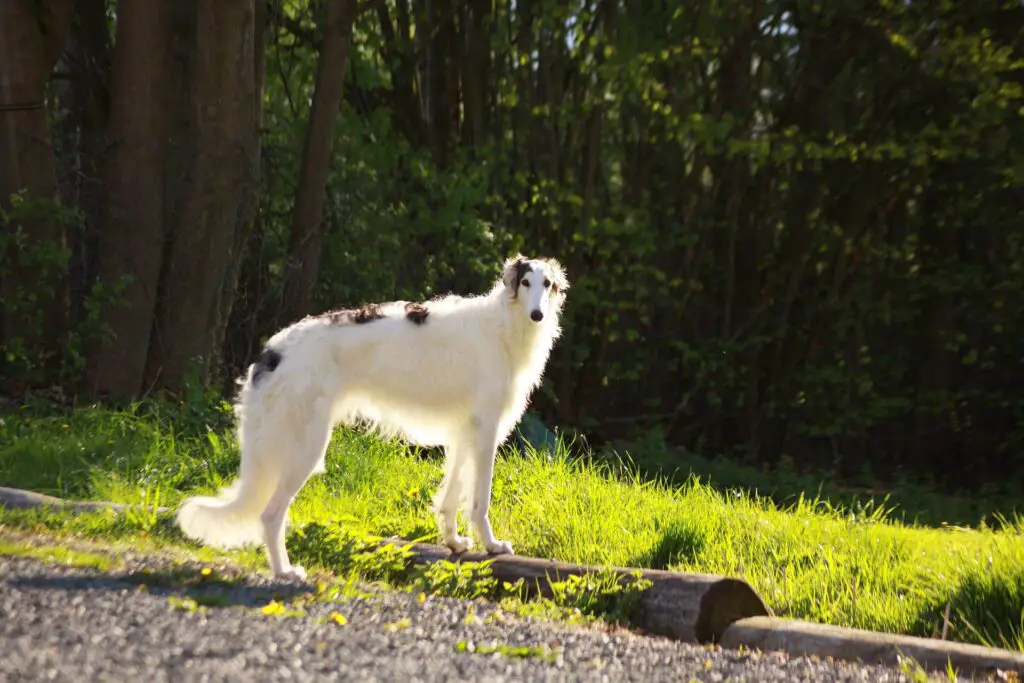
Comments are closed.